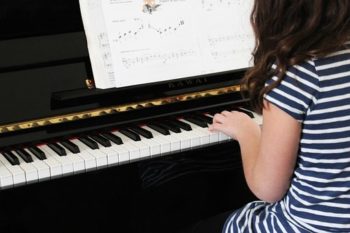Engaging Our Children in Daily Assignment Assessments
 Engaging Our Children in Daily Assignment Assessments
Engaging Our Children in Daily Assignment Assessments
As many students begin their school year in a remote classroom, teachers and parents can help their children understand their learning intentions and identify effective assessment strategies for demonstrating learning. Assessment definitions typically include these key ideas:
- Measures the outcomes of teaching and learning
- Gathers and uses information about students’ knowledge and skills
- Relies on empirical data
A More Comprehensive Definition
An assessment also relies on gathering, analyzing, and using evidence and information from multiple sources about learning outcomes in ways that best support students, inform instruction, make educational decisions, and improve learning outcomes. It is most effective when it benefits both the giver and receiver. What if there was a way to document a “return on assessment?” This chart describes what happens when students are engaged IN the process of assessment as compared to the benefits when they are empowered AS assessors.
Engaging and Empowering Learners
| ENGAGING LEARNERS IN ASSESSMENT |
EMPOWERING LEARNERS AS ASSESSORS |
| TEACHERS ROLE
Reconsider the use of quizzes, tests, and other traditional “measures” of learning: Alternatively, rely on practices that involve students in the process and practices of assessment. i.e., They write the questions. |
STUDENT RESPONSIBILITIES
Rely on the best practices and research on student-engaged assessments that develop learners’ confidence, readiness to be assessed, and outcomes of learning. |
| Share explicit learning intentions that students deconstruct into actionable and attainable learning processes and outcomes. i.e., How can you use this? | Explain their goals, their learning intentions, and how they developed a personalized plan and process. |
| Offer a practical and predictable path for learning. Anticipate the need for flexibility and support. i.e., Incorporate a “Learning Tracker.” (Italics indicate links) | Describe the path they planned and followed, what went as expected, and times that they needed to be flexible, backtrack, or take detours. |
| Incorporate progress and growth indicators such as checklists and rubrics for students to check as they monitor progress along the path of learning. | Routinely display descriptions and documentation of their progress as well as areas for improvement. |
| Display exemplars of varying levels of achievement of goals: Have students compare and evaluate the exemplars. | Present explicit evidence of learning and describe how their outcomes aligned or deviated from the learning intentions and plan. |
| Provide goal-based and actionable feedback that describes ways to resolve misunderstandings as well as close lingering learning gaps. | To improve their learning, students review and explain their use of feedback that is timely, relevant actionable, and user-friendly. |
| Involve students in assessing their foundational skills and knowledge, how they will monitor progress, and feasibly evaluate the outcomes. i.e. i.e. assess pre/post | Students present and explain where their learning started, the steps they took, and how the quality of their final outcomes. |
Much success as you help your children learn how to self-assess their many online assignments.
Laura
 Performances Document Student Learning
Performances Document Student Learning